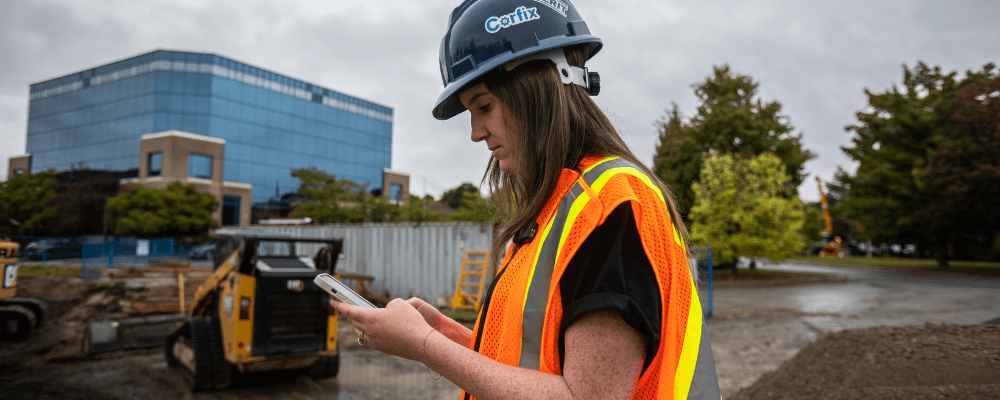As construction professionals plan for 2025, budgeting decisions come down to identifying what delivers the most value. While health and safety might feel like a “soft cost,” the financial and operational risks of underinvesting are anything but. In fact, safety investments don’t just protect your workforce—they protect your bottom line.
This year, consider not just how much health and safety costs to implement, but how much it costs to ignore. Let’s crunch the numbers.
The Cost of Neglecting Safety: Hard Numbers That Hit Hard
1. Injuries and Accidents: $40,000 to $1 Million per Incident
Construction site injuries cost an average of $40,000 in direct expenses, such as medical bills and workers’ compensation, according to the National Safety Council. Add indirect costs like downtime, rework, and morale loss, and the total can hit three times that amount. Severe incidents involving multiple workers or equipment damage can easily cross the $1 million mark.
Example: A single scaffold fall can result in:
- Medical costs: ~$100,000
- Investigation and compliance fixes: ~$50,000
- Lost productivity: ~$150,000
2. Fatalities: $4 Million+ in Total Costs
According to the Bureau of Labor Statistics, the construction industry saw 1,075 fatalities in 2023 (the most recent year for which data is available)—the highest of any sector. Each fatality costs businesses upwards of $4 million, including legal fees, OSHA fines, settlements, and project delays. Beyond the financial impact, the reputational damage can ripple across years of bidding cycles.
3. OSHA Fines: Up to $161,323 per Violation
OSHA violations, even for less severe infractions, carry fines of up to $16,131 per violation, with repeated offenses hitting $161,323 each. For companies with multiple projects, these fines can snowball quickly, jeopardizing budgets and contractor relationships. (P.S. These maximum fine amounts are slated to go up in January, and annually in perpetuity to account for inflation.)
4. Project Delays: Approaching $50,000/day
Safety incidents don’t just stop work—they trigger a domino effect of costly delays. The true cost of these can be hard to calculate with so many variables. For major capital expenditure projects, every day late equates to thousands of dollars lost. In fact, for an average size project, even a 10 percent overrun can lead to a $5 million hit to project profitability.
Some estimates suggest that between investigations, downtime, and reassigning labor, project delays can cost as much as $45,662 per day. Clients frustrated by missed deadlines often add penalties, escalating the financial strain.
5. Insurance Premiums: Up to 30% Higher for Unsafe Sites
Insurance providers track safety records closely. The Workers compensation formula as calculated by the National Council on Compensation Insurance is: Payroll x Classification Rate x Experience Mod = Premium.
Given that most construction jobs have a classification rate reflecting the inherent dangers of the job, the factors within the control of a construction owner are things like incident record and safety procedures, which can result in credits and better rates. On the other hand, a report by the NCCI found employers with a high experience modification rate (EMR)—a measure of past injury claims—may pay up to 50% more in insurance premiums compared to those with a good safety record. These increased premiums erode profit margins and can make business unsustainable.
Where to Invest for Maximum ROI: Four Tools That Drive Safety and Efficiency
When you think about safety investments, it’s not just about hard hats and training videos—it’s about embedding safety into your daily operations. That’s where construction management tools like Corfix make all the difference. OSHA’s Office of Regulatory Analysis estimates “a return of $4 to $6 for every $1 invested” in safety management programs.
1. Real-Time Safety Tracking
Use digital platforms to monitor safety compliance in real-time. Tools like Corfix help supervisors track inspections, log incidents, and ensure equipment meets safety standards—all from one centralized dashboard. This reduces oversight gaps that lead to accidents.
2. Automated Compliance Management
Compliance mistakes are costly—but avoidable. With software that automates OSHA reporting, document tracking, and certification renewals, you can eliminate human error and stay audit-ready.
- ROI: Averting a single violation (~$16k) offsets years of software costs.
3. Streamlined Communication
Safety breakdowns often result from poor communication. Software that integrates task assignments, incident reporting, and alerts ensures that every worker is informed in real-time.
- Example: A supervisor spots a hazard and sends instant site-wide alerts, potentially saving lives and avoiding disruption.
4. Worker Training and Documentation
Use a digital platform to provide on-demand safety training and ensure workers always have the right documentation, such as certifications or permits.
- Value Add: Workers stay safe, and your projects stay compliant, reducing risk and downtime.

The 3 Ways Corfix Saves You Money
There’s a good chance you’re losing significant amounts of money without even realizing it. And we’ve done the math to back it up.
2025: A Year to Lead with Safety
In the construction world, safety isn’t just an ethical imperative—it’s a financial strategy. Investing in tools and processes that enhance safety protects your workforce, your reputation, and your profitability. Prioritize safety—it’s not just the right thing to do; it’s the smart thing to do.
